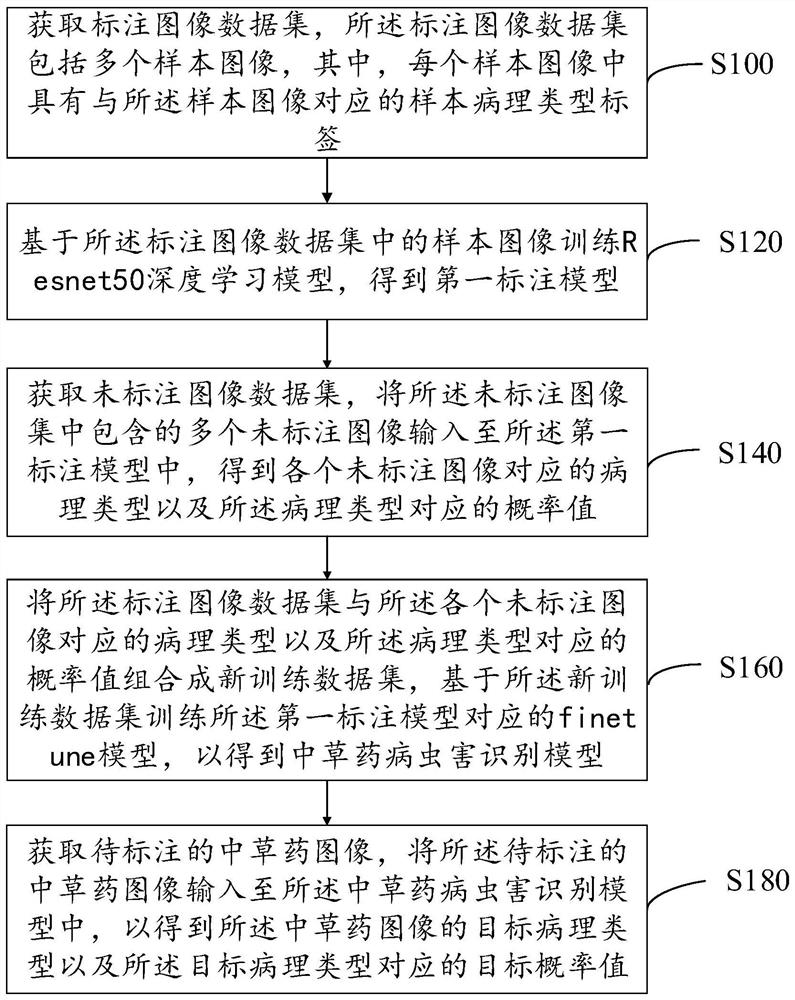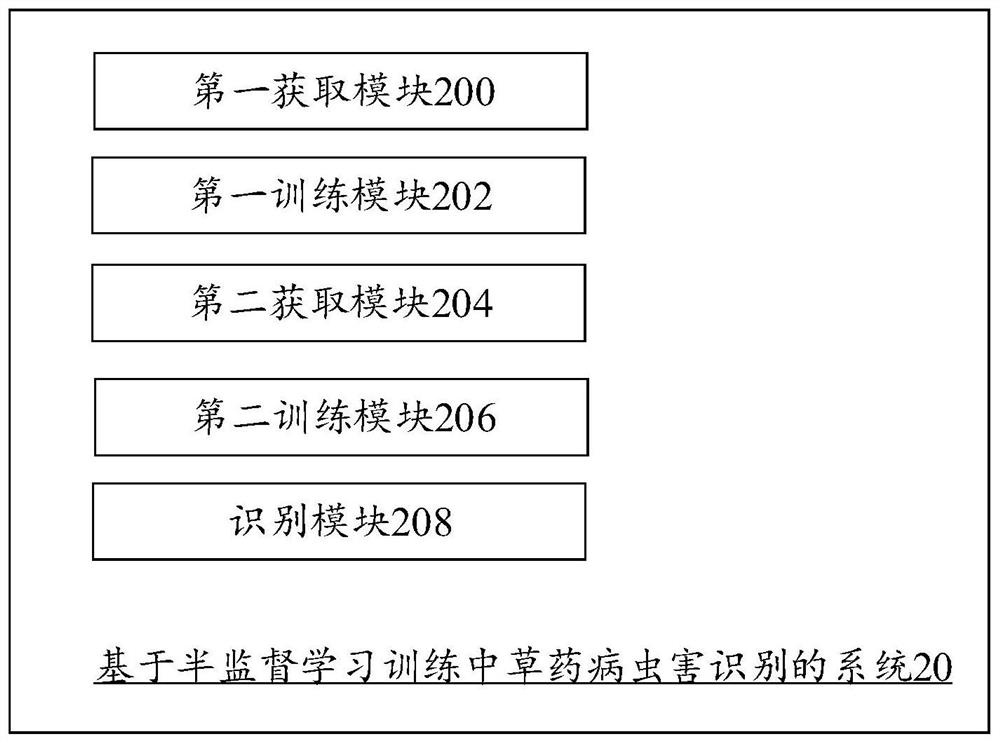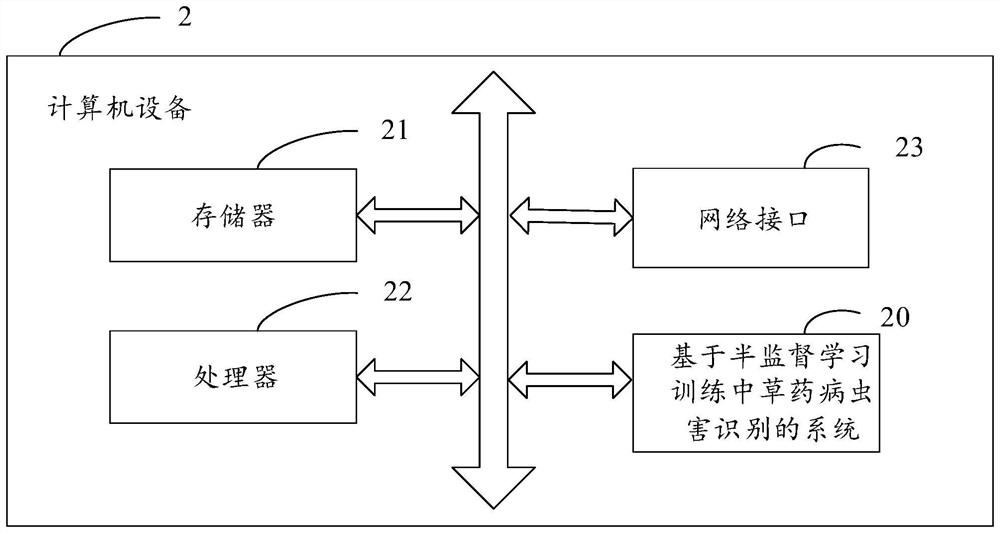Method and system for training Chinese herbal medicine disease and insect pest recognition model based on semi-supervised learning
A semi-supervised learning and identification model technology, which is applied in the field of Chinese herbal medicine pest identification model based on semi-supervised learning training, can solve the problems of lack of mature and effective systems, time-consuming work, and failure to meet the recognition accuracy requirements, so as to improve the accuracy of training , the effect of accurate identification results
- Summary
- Abstract
- Description
- Claims
- Application Information
AI Technical Summary
Problems solved by technology
Method used
Image
Examples
Embodiment 1
[0046] refer to figure 1 , shows a flow chart of the steps of the method for training a Chinese herbal medicine pest identification model based on semi-supervised learning in Embodiment 1 of the present invention. It can be understood that the flowchart in this method embodiment is not used to limit the sequence of execution steps. An exemplary description is given below taking the computer device 2 as the execution subject. details as follows.
[0047] In step S100, an annotated image dataset is acquired, the annotated image dataset includes a plurality of sample images, wherein each sample image has a sample pathology type label corresponding to the sample image.
[0048] Specifically, the annotated image data set is the labeled image data of Chinese herbal medicine diseases and insect pests, the sample image is the image of Chinese herbal medicine diseases and insect pests, the sample pathological type is the disease and insect pest type, including disease type and physio...
Embodiment 2
[0100] read on figure 2 , shows a schematic diagram of the program modules of Embodiment 2 of the system for training Chinese herbal medicine pest identification models based on semi-supervised learning. In the present embodiment, the system 20 based on the semi-supervised learning training Chinese herbal medicine disease and insect pest identification model may include or be divided into one or more program modules, one or more program modules are stored in the storage medium, and are composed of one or more The processor is executed to complete the present invention, and can realize the above-mentioned method for training the identification model of Chinese herbal medicine diseases and insect pests based on semi-supervised learning. The program module referred to in the embodiment of the present invention refers to a series of computer program instruction segments capable of completing specific functions, which is more suitable than the program itself to describe the execut...
Embodiment 3
[0134] refer to image 3 , is a schematic diagram of the hardware architecture of the computer device according to Embodiment 3 of the present invention. In this embodiment, the computer device 2 is a device capable of automatically performing numerical calculation and / or information processing according to preset or stored instructions. The computer device 2 may be a rack server, a blade server, a tower server or a cabinet server (including an independent server, or a server cluster composed of multiple servers) and the like. Such as image 3 As shown, the computer device 2 at least includes, but is not limited to, a memory 21, a processor 22, a network interface 23, and a system 20 for training a Chinese herbal medicine pest identification model based on semi-supervised learning, which can communicate with each other through a system bus. in:
[0135] In this embodiment, the memory 21 includes at least one type of computer-readable storage medium, and the readable storage...
PUM
 Login to View More
Login to View More Abstract
Description
Claims
Application Information
 Login to View More
Login to View More - R&D
- Intellectual Property
- Life Sciences
- Materials
- Tech Scout
- Unparalleled Data Quality
- Higher Quality Content
- 60% Fewer Hallucinations
Browse by: Latest US Patents, China's latest patents, Technical Efficacy Thesaurus, Application Domain, Technology Topic, Popular Technical Reports.
© 2025 PatSnap. All rights reserved.Legal|Privacy policy|Modern Slavery Act Transparency Statement|Sitemap|About US| Contact US: help@patsnap.com



